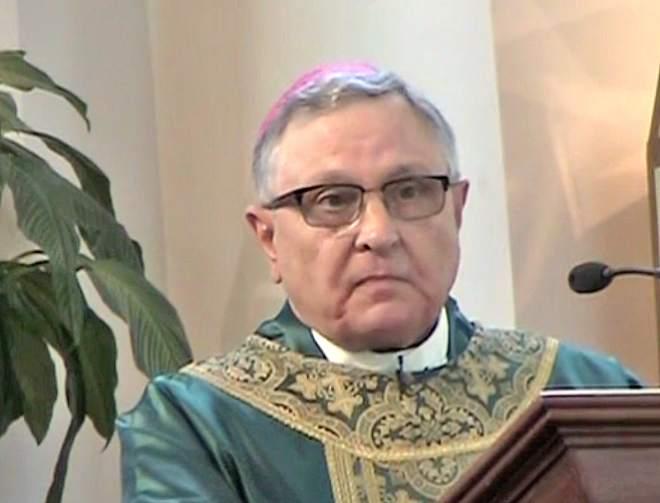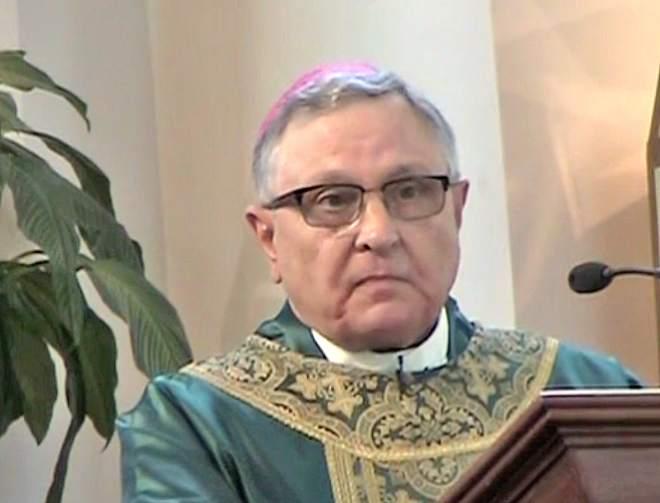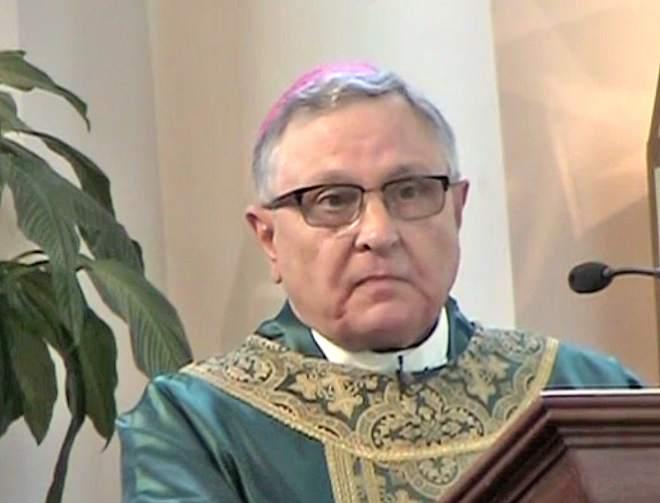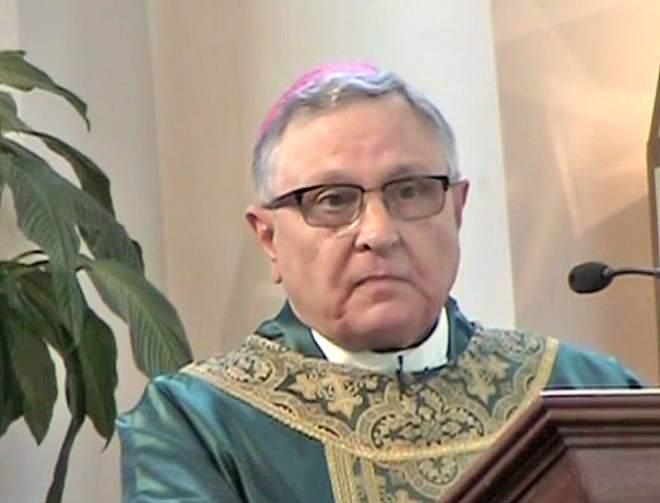|
Records reveal new info in priest child abuse case
By Billy Gunn And Richard Burgess
LAFAYETTE — When revelations about pedophile priest Gilbert Gauthe hit the headlines in 1984, the Diocese of Lafayette was shaken by a clergy abuse scandal that, in the years after, spread nationwide. Gauthe molested scores of children in the 1970s and 1980s throughout Acadiana as the diocese shifted him from one church to the next — and he wasn’t alone. The scandal here unfolded to reveal other abusers in the priesthood, calling into question what the local Catholic leadership had known, what they might have done to conceal it and just how widespread the problem was. It’s been some three decades since plaintiff lawyers and journalists first dissected church leaders’ actions, but recently unearthed court documents cast fresh light on an old scandal. The hundreds of pages of internal church records and depositions show the abuse was likely more pervasive than the public knew at the time and the roots of the problem stretch back years before Gauthe. The paperwork also provides something that church leadership to this day has refused to fully disclose: the identities of Lafayette-area priests accused of molesting children. Records show that even as the Gauthe scandal began to pick up steam, diocese officials quietly moved another child sex-abusing priest, Robert Limoges, to the neighboring Diocese of Baton Rouge. In a letter to the Baton Rouge Diocese, a Lafayette church official cited the potential legal and public relations crisis on the horizon because of the expected outrage surrounding Gauthe’s abuses, saying the church couldn’t afford to keep another accused pedophile in the area. Years before Gauthe’s transgressions came to light, church leaders in 1977 forced another priest, Harry Quick, into counseling after allegations stemming from a Eunice church. One internal memorandum filed into the federal court record characterized Quick as “a problem” and suggested he, too, was successively relocated after parishioner allegations of sexual assault. The memo noted that “it was assumed every time he moved it was because there was some complaint of molestation.” The new details come from a now-unsealed federal lawsuit filed by the Lafayette Diocese to force its insurers to pay victims’ legal claims. The lawsuit was ferreted out by Minnesota Public Radio, which took a new look at the Acadiana priest scandals while evaluating the tenure of former Lafayette Bishop Harry Flynn, who landed in Minnesota in 1994 after five years as the head of the Lafayette church. Flynn assumed the Lafayette bishop mantle in 1989, as the diocese reeled from the Gauthe revelations. Documents from the lawsuit, which was fought under seal from 1988 until 1998, show attorneys for insurance firm Arthur Gallagher argued that the diocese knew for years, if not decades, that some of their priests had fondled and even raped children. The molestations took place largely during the reigns of Bishops Maurice Schexnayder, who led the diocese from 1956 to 1973, and Gerard Frey, who was at the helm from 1973 to 1989. As the diocese pressed for insurers to pay claims, Gallagher attorneys urged a judge to find only the church could be held financially responsible. “Only the diocese knew that it had active priests who molested children,” one motion argued. “During the 1970s and 1980s, the men who ran the Diocese of Lafayette manufactured a time bomb of epic proportions. They allowed child molesters to continue as priests, moving them around to new, unsuspecting parishes and thereby affording them access to new victims, primarily in the form of innocent children.” But the diocese prevailed in its suit against Arthur Gallagher and other insurance companies that wrote policies for the diocese. Lafayette Diocese Bishop Michael Jarrell in 2004 disclosed that 123 victims molested by 15 diocesan priests received $24.4 million, almost all of that paid by insurance companies. While Jarrell has been open about the financial cost of the abuse cases, he has refused to provide an accounting of which priests are believed to have molested children. Over the years, some names have become public. Journalist Jason Berry reported decades ago on Limoges and Lane Fontenot, a Louisiana priest who went on to face criminal charges of child molestation in Washington state, and John Engbers, a Dutch priest accused of raping young girls at churches across the Lafayette region. In a 1992 book, “Lead Us Not Into Temptation,” Berry also wrote about Lloyd Hebert, a priest who resigned after being accused of molesting an adolescent in Opelousas. There is scant information about Hebert in the federal lawsuit record, although Frey in a 1988 deposition characterized him as a child molester who was suspended by the diocese. Former Lafayette Bishop Edward O’Donnell in 2002 unmasked three others: Monsignor Michael Herpin, a former high-ranking diocese official, who was accused of “sexual impropriety with a minor” in the early 1970s, Wilfred DesRosier, accused of molesting children at a Rayne church from 1967 to 1972, and Joseph Alexander, removed from his Lafayette church after he acknowledged molesting a child in Kentucky in 1962. The identity of another former priest, David Primeaux, became known in 2012 following his suicide after being confronted in Virginia about his past in Louisiana. But the federal court records, along with lawsuits filed in courthouses across the Acadiana region, provide at least some of the other names that Jarrell has kept secret. One mentioned in the court file is current St. Edmond Catholic Church pastor Gilbert Dutel. The Lafayette priest is named sporadically in the files, including on a list composed by insurance company attorneys that said Dutel was a priest the diocese “must have known” about. Another file, which was first brought to light by Minnesota Public Radio this summer, contains a June 1992 interview with a man who claimed Dutel was the first of three priests who molested him. He said the activity with Dutel started when he was 9 or 10 in 1976 and ended when he was 14. Dutel has denied he ever molested anybody. Jarrell has said he doesn’t see the need to revisit the case, saying the priest was cleared long ago. Some of the priests named in the records are accused of abuse that dates back to before Gauthe — sometimes even decades before he became a household name in Acadiana. Those priests are Marshall Larriviere, Aldeo Gilbert, Valerie Pullman and Joseph Pelletieri, who served in various diocese locations. Almost all the priests mentioned in the court file are now deceased except Gauthe and Pullman. What happened to Limoges and Pelletieri is unclear. Jarrell largely declined to answer written questions about the priests mentioned in the lawsuit documents and what actions the diocese took. “As to past investigations some thirty or forty years ago, it is practically impossible to research files that old and try to interpret fairly what happened back then,” Jarrell said in a written response. Hundreds of pages of documents from the federal court file, along with records from at least a dozen state court files, were reviewed to come up with the following list of Lafayette-area priests accused of child abuse. Robert LimogesLimoges was ordained in 1979 and soon after began to molest boys, according to records. From 1980 to 1982, Limoges molested two boys who were 6 and 7 years old while he was pastor at Our Lady of Victory Church in Loreauville, according to a lawsuit filed against him a decade later. The lawsuit said the attacks occurred in the church rectory. It was eventually dismissed, as courts found that too many years had elapsed between the rapes and filing the suit. In a 1983 preliminary psychological evaluation at the House of Affirmation, where doctors work with priests who have exhibited pedophilia tendencies or problems like alcoholism, a doctor wrote that Limoges himself had been raped when he was young. “Father Limoges is preoccupied with the sexual problems which were the primary cause of his coming for assessment,” wrote Russell Surveyer, director of assessments at the House of Affirmation. Court records show the lengths to which the Lafayette Diocese went to protect Limoges even as the Gauthe case was beginning to make waves in Vermilion Parish. In December 1983, Limoges was on the verge of being sent home from the California-based House of Affirmation. But Lafayette Diocese Vicar General Monsignor Henri Alexandre Larroque wrote a letter marked confidential that asked the facility to keep him a while longer. Larroque said the diocese had informed the 15th Judicial District Attorney’s Office about the allegations against Limoges and that returning to Lafayette after the other priest — Gauthe — had been accused would be unwise. “My reason for writing is that the possibility of Father Limoges returning to the Diocese at this time must be seriously questioned, especially in view of the fact that he may be harmed in the undertow of a case which does not envolve (sic) him at all,” Larroque wrote. The diocese contacted Diocese of Baton Rouge Bishop Stanley Joseph Ott, who accepted Limoges as a priest there. It didn’t last. Two months later, Limoges left. It’s unknown if Limoges is still alive. Marshall LarriviereLarriviere died Aug. 27, according to a notice published by the Evangeline Funeral Home in New Iberia. He was 77 and had been a resident of Florida. Larriviere was sued in 2003 by a woman and her parents who claimed he raped the woman and a friend of hers in 1968, when she was seven. The rape allegedly occurred at Larriviere’s camp on Bayou Jack in Vermilion Parish. The parents of one of the victims were good friends with Larriviere, who was a priest at St. Mary Magdalen Church in Abbeville, the suit states. The lawsuit says that while at the camp, Larriviere coaxed one girl to an upstairs loft at the camp and raped her. “He then strongly admonished her to keep this event to herself,” the lawsuit states. While the attack was occurring in the loft, the other girl climbed the stairs and was met by Larriviere. He raped her, too, the lawsuit states. The diocese settled the case in September 2008 for an undisclosed amount of money. Larriviere, who once served as the Catholic apostolate to the deaf fo r the Lafayette Diocese, was no longer a priest at the time of his death and never faced criminal charges. Valerie PullmanPullman, now 74, is a resident of Jennings. Contacted Friday, Pullman said he didn’t want to talk to a reporter. “I’ve been out of the priesthood 27 years. Bye-bye,” he said. Pullman was a young priest in the diocese in 1972, when he is accused of assaulting a young altar boy he took under his wing. Parents of the boy believed Pullman was a “godsend,” the suit states. Exactly how old the boy was when the abuse began is unclear, although the lawsuit claimed it lasted until the victim was 15 or 16, even occurring at out-of-state religious conferences that Pullman and the boy attended. Pullman’s victim repressed the memories until he was an adult, according to the suit. “In June 2003, (the victim) watched a television report that reported a priest being arrested for a hit and run accident,” the victim’s attorney, Anthony Fontana, wrote in the lawsuit. “The image of a priest being handcuffed began to trigger the recoveries of being molested and being forced to do dirty things,” the lawsuit asserts. The diocese settled the case for an undisclosed amount of money in July 2008, according to court documents. Pullman was ordained in the Lafayette Diocese sometime before 1973 and was a member of the Diocese of Lake Charles from January 1986 until October 1987, according to court documents and Lake Charles Diocese officials. Pullman has never faced criminal charges. John EngbersEngbers was priest at St. Peter the Apostle Catholic Church in Gueydan in the early 1970s when he sexually assaulted a girl who was 3 or 4 years old, according to a lawsuit filed by the victim in 1989. The victim said she remembered the attack years later when she was a college student. That suit was settled in May 1996, with the diocese paying an undisclosed amount of money. Other documents in the court record accuse Engbers of assaulting young girls at several other churches going back to the 1950s. Frey, in a 1995 deposition, said Engbers was one of eight pedophiles the Lafayette Diocese had known about. Engbers fled to his native Holland in 1985 just ahead of the lawsuits, and by 1995, he had died. Aldeo GilbertMolestation accusations against Gilbert go back decades, including a well-publicized claim in the early 1990s that alleged he headed a cult of women that preyed on young girls. Documents in a lawsuit filed in December 1992 state Gilbert set up “vocation clubs” for girls at Sacred Heart Church in Ville Platte from 1952 to 1959 and at St. Theresa Catholic Church in Abbeville from 1959 to 1969. The clubs were ostensibly meant to guide girls into being nuns. The suit, filed in 1992 on behalf of “Jane Doe,” was eventually dismissed for being filed too long after the alleged abuse. Court documents show that one of Gilbert’s accusers also was a Catholic priest, who served from 1961 until he resigned from the priesthood in 1971. The priest, who became a businessman, said in a 1994 sworn statement that he arranged a meeting between two girls and Bishop Maurice Schexnayder. The meeting, which included the girls’ parents, took place in 1964 or 1965. The girls told Schexnayder “about extensive sexual abuse committed by Aldeo Gilbert upon females in Gilbert’s vocation clubs,” the document states. The priest told Schexnayder that he believed the girls. One year later, the parents of the two girls asked the priest if Schexnayder had made any changes or had sanctioned Gilbert in any way. The priest told the parents that he didn’t think the bishop had done anything. Gilbert died in 2007. Joseph PelletieriPelletieri was a priest at Immaculate Heart of Mary Catholic Church in Crowley and also principal at Notre Dame Catholic High School in 1971 and 1972. In 2003, the son of a janitor at Notre Dame High claimed in a lawsuit to have been molested by Pelletieri when he was 11 to 14 years old in the 1960s. The man said that as he viewed televised reports in the early 2000s about priest scandals in Boston and elsewhere, he started remembering his abuse. Like in lawsuits by others against the diocese claiming abuse, the plaintiff in the 2003 lawsuit was listed anonymously — John Doe. “It is alleged that in this period (1965-1968) Mr. Doe alleged Father Pelletieri utilized hypnosis and post-hypnotic suggestion to engage in or have Mr. Doe engage in inappropriate sexual behavior,” said a 1st Circuit Court of Appeal ruling in December 2008. The 1st Circuit agreed with state district court Judge Michael Caldwell’s decision that too much time had elapsed in the case for a successful suit and ruled it should be dismissed. But Caldwell wasn’t approving of the church. “I’m going to note that ... from all the information available, (the) defendants know something transpired between Father Pelletieri and (the victim) that was not right ... But they (Catholic Church officials) have vigorously and at some times viciously fought this litigation throughout, and I think the very least that the defendants can do is to bear their own costs,” Caldwell wrote. The Redemptorists, an order Pelletieri belonged to, suspended him when they learned more of the victim’s claims as the lawsuit progressed, according to the 1st Circuit decision. It is unknown if Pelletieri is alive or where he resides. Jarrell did not respond to a question about him. David PrimeauxPrimeaux’s crimes against boys came to public notice after his suicide in December 2012, when he connected a hose from his pickup’s exhaust pipe to the truck’s window near his Virginia home. Primeaux, who had married and built a new life, was a professor at Virginia Commonwealth University. Primeaux killed himself a few days after Christmas after being confronted about his pedophile past in Louisiana. According to a January 1985 psychological report, Primeaux was handsome and smart, earning a Ph.D. in philosophy from the University of Louvain in Belgium. But, according to the report, at 27, he began to have homosexual trysts in 1977, one of them with a minor, when he was a teacher at St. Benedict Monastery in Covington. Church officials transferred Primeaux from the monastery to the Lafayette Diocese news office. Psychologist Edward Shwery, who counseled Primeaux in January 1985, noted the Abbeville native’s lack of regard for his young victim at St. Benedict. “David was primarily concerned with the embarrassment and difficulty explaining his removal” from St. Benedict after being confronted by superiors about the abuse, Shwery wrote. “... There was abundant narcissistic concern with little or no empathy for this adolescent victim.” The transfer from Covington didn’t stop him. He told Shwery in the 1985 sessions that he repeatedly sexually abused seven altar boys ages 13 through 16 during his time as priest at St. Joseph’s Catholic Church in Milton in the early 1980s. Shwery diagnosed Primeaux as having narcissistic personality disorder. He left the priesthood in 1985. Fifteen years later, the Lafayette Diocese would settle a lawsuit filed in 1991 by parents who claimed their son was abused by Primeaux. The court documents do not state what the diocese paid to settle the case. Lane FontenotBefore he was even ordained, Catholic leaders knew Father Fontenot was going to be a problem. Uncooperative and prone to behavior that warranted probations, Fontenot was often in trouble with superiors. “I would say that wherever he goes, he should be watched closely,” the Rev. Gerald Hughes, of the Holy Trinity Seminary in Irving, Texas, wrote to Bishop Schexnayder in December 1972. In January 1973, the board that vets seminarians at Notre Dame Seminary in New Orleans rejected Fontenot’s application to prepare for the priesthood there. The Lafayette Diocese hierarchy didn’t watch closely enough. According to court documents, there were at least 13 boys molested by Fontenot while he was with the diocese.After he was ordained in December 1975, Fontenot was first at Saint Peter’s in Gueydan. Six months later, he was moved to Our Lady of Perpetual Help Church in New Iberia. In March 1977, Fontenot became associate pastor at Our Lady of Mercy in Opelousas, where he stayed for two years before he took a sabbatical. In June 1982, Fontenot was assigned to Our Lady of Fatima in Lafayette. He was at Fatima when, in January 1984, a report of sexual molestation led to his suspension and trips to psychological facilities for help, according to diocese records contained in court records. Those records do not state when he left the priesthood. Fontenot spent some time in a Washington state prison for molesting a juvenile and later became a counselor in Albuquerque, New Mexico. The parents of a Vermilion Parish boy who claimed Fontenot molested him sued the diocese in 1987. The amount of the settlement, reached in 1988, was not disclosed in court records. He died in a Houston hospital on April 23 and was buried in Ville Platte. He was 67. Harry QuickThen-Bishop Gerard Frey in a January 1988 deposition called Quick a child molester. Quick was forced to undergo counseling after allegations arose in 1977 at St. Thomas More Church in Eunice, Frey said, noting that another priest met with the parents of the child to set up counseling for the youth. Frey said Quick was removed from the church parish in 1977 and sent to Notre Dame University in South Bend, Indiana, for counseling. He was later assigned as chaplain at a hospital. But by 1980, Quick was back in another Lafayette Diocese church parish, where the parents of another boy reported abuse by him. Asked why Quick had been assigned to another church parish by the diocese, Frey claimed he was getting confused on dates and could not answer the question. In a March 1988 deposition, Frey said he was “fairly sure” he asked Quick how many kids had been molested. “He said there was only one,” Frey answered. A 1988 memo details an attorney’s conversations with Quick and diocese officials. The author of the memo, who is identified only by initials, writes that he asked Quick about his career at the Lafayette Diocese because conversations with Bishop Flynn and Monsignor Larroque “indicated (Quick) had always been a problem and that it was assumed every time he moved it was because there was some complaint of molestation ...” The memo says Quick, who died before the 1988 depositions, admitted to sexual encounters with a young seminarian. It also states that Quick denied being transferred out of church parishes because of molestation allegations. No lawsuits were ever filed against him. Gilbert GautheCourt records show that Lafayette church leaders, who ignored many signs of Gauthe’s possible abuse of children before parents from one Vermilion Parish church began to press the issue, eventually grasped what a key figure he would become for the diocese. In a 1988 deposition, then-Bishop Gerard Frey noted, “The dam broke when Gauthe came into the priesthood.” Many of the documents in the federal court record detail Gauthe’s misdeeds, and in state court, there were at least 17 lawsuits — all of them sealed — filed in Lafayette and Vermilion parishes against the church and Gauthe. At least one suit, filed in 1991, was settled by the Lafayete Diocese in 2000. The amount paid to the victim and his family was not disclosed. The federal court records includes a list of 47 victims and settlements. Documents show the diocese should have paid attention to him going back to the early 1970s. In 1985, Sister Bernie Galvin wrote to an attorney who represented many victims, saying she noticed Gauthe’s odd behavior when they served together in Broussard at Sacred Heart Catholic Church. “I was aware of Gauthe’s very close association with three altar boys from St. Cecilia School (which is associated with Sacred Heart),” said Galvin, who had been principal at that school from 1970 to 1974. The boys, in third through seventh grades, were frequent night guests of Gauthe at the church rectory, she said. “The rectory was next door to the church and school,” Galvin wrote. “Gauthe used to send for (the seventh-grade boy) during school hours.” Another nun at the school told Galvin one night that “after one such call for (the boy) from Gauthe, ‘God forgive me for what I thought when (the boy) returned to the classroom and I saw the expression on his face,’ ” Galvin said. Galvin said she and the other nun “decided upon a firm school policy from that moment forward: No child would ever be permitted to leave the school grounds to go to the rectory from the time they arrived at school until the time they left at the end of the school day.” Gauthe’s crimes earned him a prison sentence, from which he was released early. According to the Texas Department of Public Safety’s sex offender records, he now resides in San Leon, Texas. Contact: bgunn@theadvocate.com
|
.
Any original material on these pages is copyright © BishopAccountability.org 2004. Reproduce freely with attribution.



